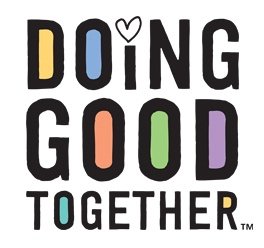Learn ways to include kindness lessons in educational settings and beyond! Through learning about kindness, children learn empathy and compassion and can begin viewing the world around them through the eyes of others as they appreciate diverse perspectives. By building kindness activities into regular educational practices, we prepare kids for life as an adult who cares and contributes to the world around them.
Loving Hearts, Loving Kindness: Exploring 4 Lesser-Known Types of Love for Children and Families
Valentine’s Day often stirs strong feelings, often over-celebrated with material gestures. Our guest contributor shares how her view of the holiday was shifted by a homemade card, revealing the day's deeper potential. Learn how teaching young children about varied forms of love can foster empathy and enrich lives.
Share the Love with a Service-Themed Valentine's Day Party
The Messy Middle: Helping Children Understand Process Over Product
We might apply the idea of a “messy middle” to much of life–switching careers, engaging in social change, even parenting/family life itself. Most of our lives happen in this space, when you stop to think about it–we haven’t yet “arrived” at the metaphorical place of organization and tranquility, but are constantly evolving our processes to be responsive to needs. How might we help our children understand the messy middle–its necessity, its tension, its gift–in a developmentally-appropriate way?
Parenting Pressure: How the Surgeon General’s Advisory Aims to Support You
As parents and caregivers, you likely know all too well the daily stressors you face. The surgeon general’s report outlines the specific challenges we face at each stage of a child’s development, from sleepless nights with newborns to navigating the troubled teen years. The stress doesn’t just affect us as parents, it spreads to impact the whole family unit. And when we worry that our stress is affecting our kids, the cycle feels never-ending. The surgeon general’s report calls attention to this vicious cycle and offers actionable ways to break it.
Disagreements and Differences: Strategies for Helping Kids Navigate Our Divisive World
In today's fast-paced information cycle, issues are often presented as black or white, right or wrong. When parents actively listen and support diverse perspectives on various topics, from child care to nutrition, they model for children how to understand and appreciate differences, encouraging a more nuanced and empathetic view of the world.
The Important Impact of Community and Volunteering in Helping Children and Teens Navigate Life Transitions
Mental health experts recommend helping young people build an understanding over time of what they can and can’t control. Bringing the focus to “how we treat other people; what activities we do the next day; what goals we have; who we spend time with; how hard we try to do the best we can” is something we can start in middle childhood to build a strong frame of reference in adolescence.
Embrace the Chaos: Supporting a Child’s Growth Through Turbulent Times
Buckling up for a metaphorical bumpy ride from time to time as you enter a new job, experience a change in leadership, or encounter a developmental growth spurt is something that begins at birth and follows us until life’s conclusion. The winds of change blow strong. With children, we sometimes don’t see the changes themselves right away; instead, we see the impact of the changes in personal barometers of behavior and mood. How can we as supportive humans respond effectively to the need for change and see the purpose behind the disequilibrium?
Shine Your Light: 5 Strategies to Empower Children by Reinforcing Positive Actions
People want and need to be seen. It is a fundamental characteristic of humans that we seek opportunities to connect with others in an authentic way. We want to feel noticed and valued as a member of the human community. We want to understand AND be understood. This connection is vital to our feelings of safety and happiness, and ultimately is foundational to our ability to work through challenges, think critically, be planful, and other executive function skills. How can adults use that in-born inclination to shine a light on actions that we wish to reinforce in our children?
Transforming a Child’s “I Can’t” into “I Can!”
As adults, we have a better sense of what is within our locus of control and how we can approach solving problems from our mature perspective, whereas young children see a lot of problems as big and insurmountable even if they are not. The good news is that we can cultivate the growth of our child’s sense of helpfulness over time in ways that match their developmental stage, while teaching about both agency AND the interconnectedness of humanity.
Inspiring a Growth Mindset for Kids: How Parents Can Lead by Example
in the last few years, I have worked diligently to cultivate a growth mindset and to model that approach for my teenage children. The basic idea behind this concept is that by using “yet” at the end of a sentence, we reframe our approach to problems and retrain our brains to see challenges as opportunities to learn and grow.
29 Big-Hearted Family Conversation Starters
How to Talk to Kids About Poverty, Mental Illness, Systemic Racism, and Violence
The world in which we are helping our children to grow is not free from adversity, small or large. We cannot shield young people from the troubles of their community and world. And while it might make us caring adults feel better to try, research shows that doing so is not to their benefit, either. Children are innately curious and working continuously on relating to others as their empathy skills develop. They wonder about big questions like, “how am I similar or different to people I see suffering,” “could that happen to me,” and “my heart hurts for them; how do I help them.” Many who witness tragedy or challenges faced by other people in the world ask the same questions. How do we explain problems like poverty, mental illness, systemic racism, and violence to these small humans?













